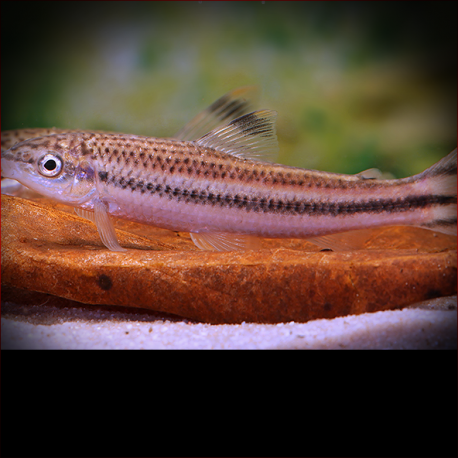More info
Datasheet
| Minimum Tank Size | 750 litres / 198.13 US gallons |
| Maximum Size | 30.0cm / 11.81inches |
| Temperature | 18°C / 64.40°F - 26°C / 78.80°F |
| Hardness | 1.01dgH / 18ppm - 12.05dgH / 215ppm |
| pH | 5.5-7.5 |
General Description
The Leporellus Vittatus, commonly known as headstander, is a species occasionally found in the aquarium trade, requiring specialized conditions for long-term care. With a maximum size of 30.0cm, it possesses morphological adaptations for a benthic existence in flowing waters, often spending its time around or on the substrate.
Aquarium Setup
For Leporellus Vittatus, the recommended tank setup should mimic a flowing stream or river, featuring a substrate of rocks, sand, fine gravel, and larger boulders. It is advised to include driftwood, roots, and branches while ensuring ample open swimming space. Although most aquatic plants struggle in such conditions, hardy varieties like Microsorum, Bolbitis, or Anubias spp. can be attached to the décor. To thrive, the species requires pristine water, high oxygen levels, and moderate water movement, necessitating the use of external filters, powerheads, and airstones. Weekly water changes of 30-50% aquarium volume are crucial for maintaining stable water conditions, while a secure lid is essential due to its propensity to jump.
Behaviour
While not ideal for a general community aquarium due to its adult size, Leporellus Vittatus can coexist with similarly-sized cichlids, catfish, and compatible species that share its environmental preferences. It thrives best in groups of six or more individuals to establish a peaceful hierarchy, as solitary specimens may exhibit aggression towards tankmates with similar body shapes.
Feeding and Diet
The species is described as predominantly herbivorous but displays flexibility in accepting various food types in captive environments. Foods high in protein should be sparingly offered to maintain a balanced diet for Leporellus Vittatus.
Reproduction & Dimorphism
Reproduction details of Leporellus Vittatus remain unrecorded, leaving aspects of its breeding behavior and sexual dimorphism undocumented within current knowledge.
Habitat and Distribution
Originating from the Amazon River in Brazil, this species has a vast natural range spanning the Amazon River system in Brazil and Peru, as well as the Paraná-Paraguay drainage in southern Brazil, the rio São Francisco basin in southern Brazil, and various tributaries in Colombia and Venezuela. Population variations in color patterns exist across different regions, though detailed studies on these differences are lacking.

